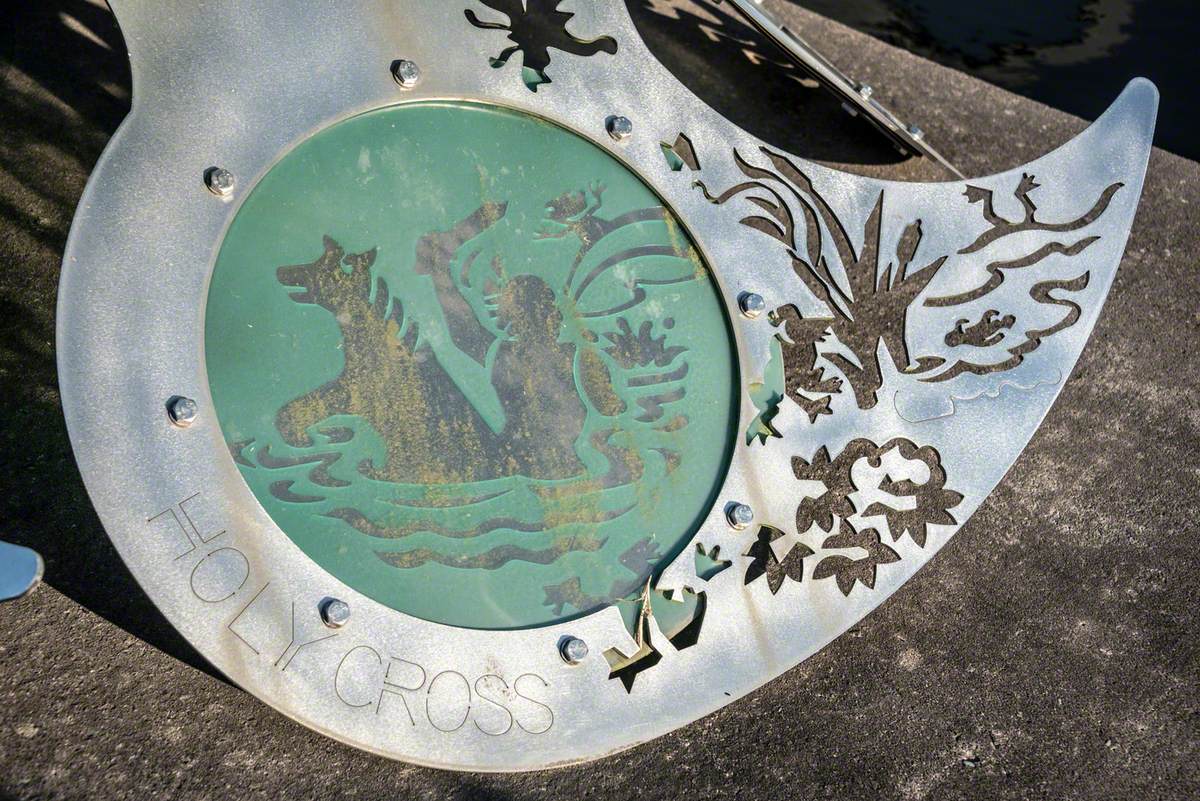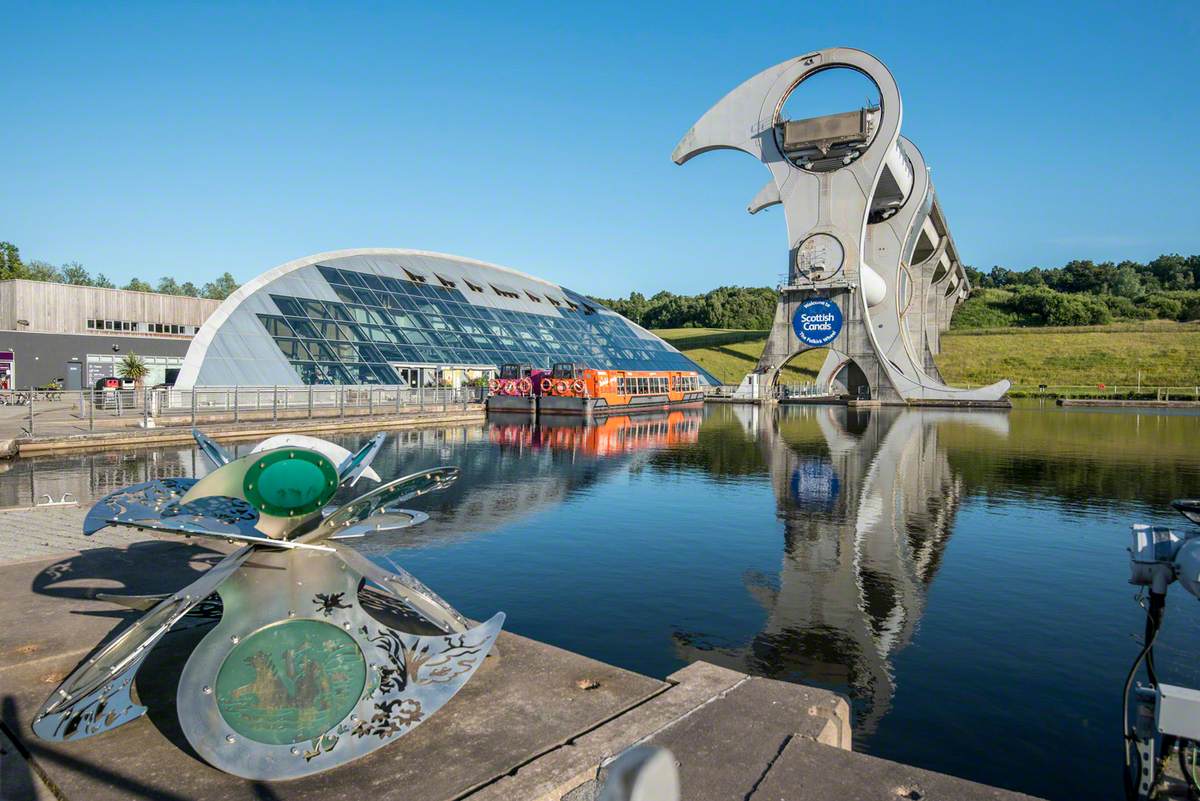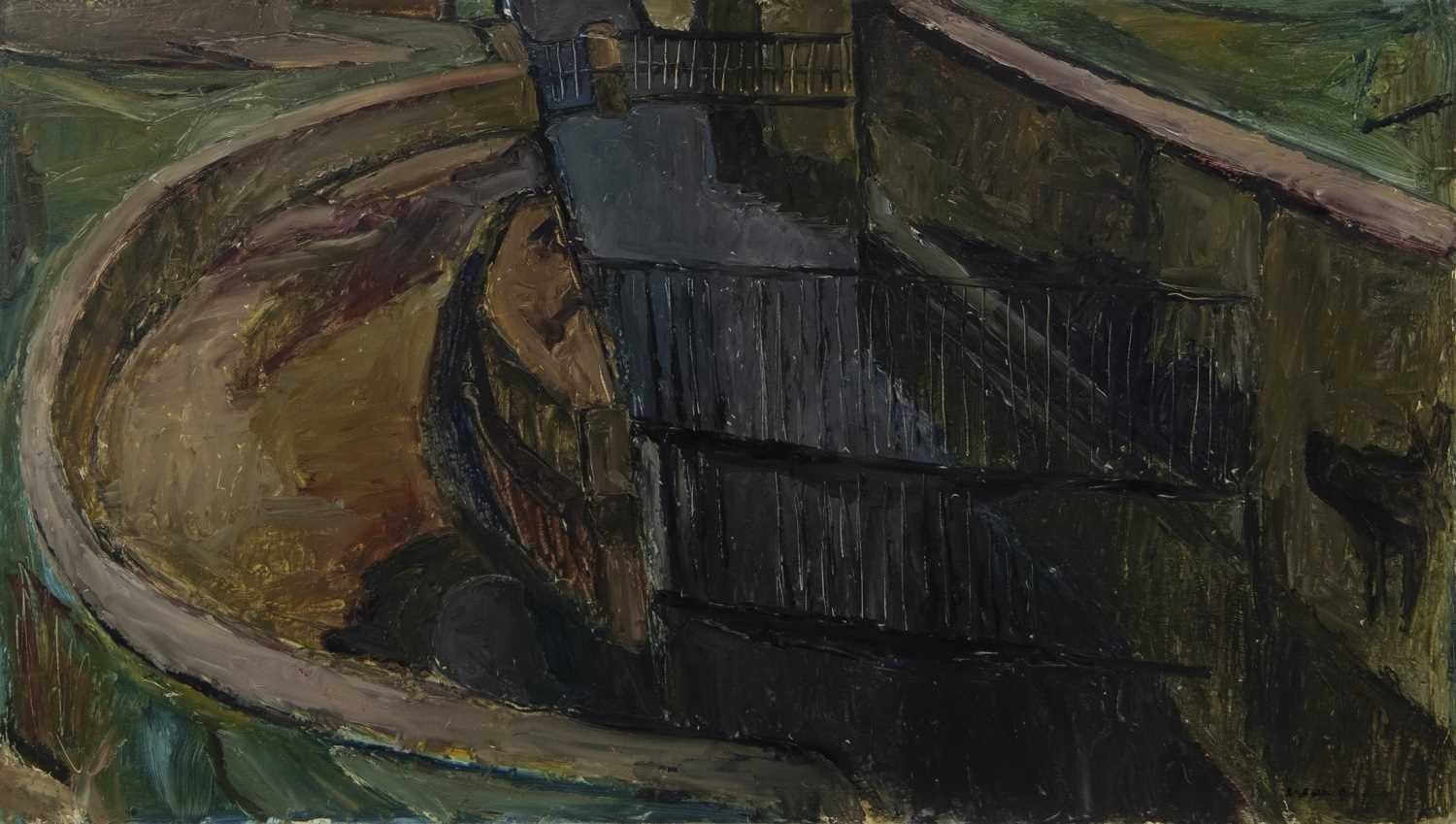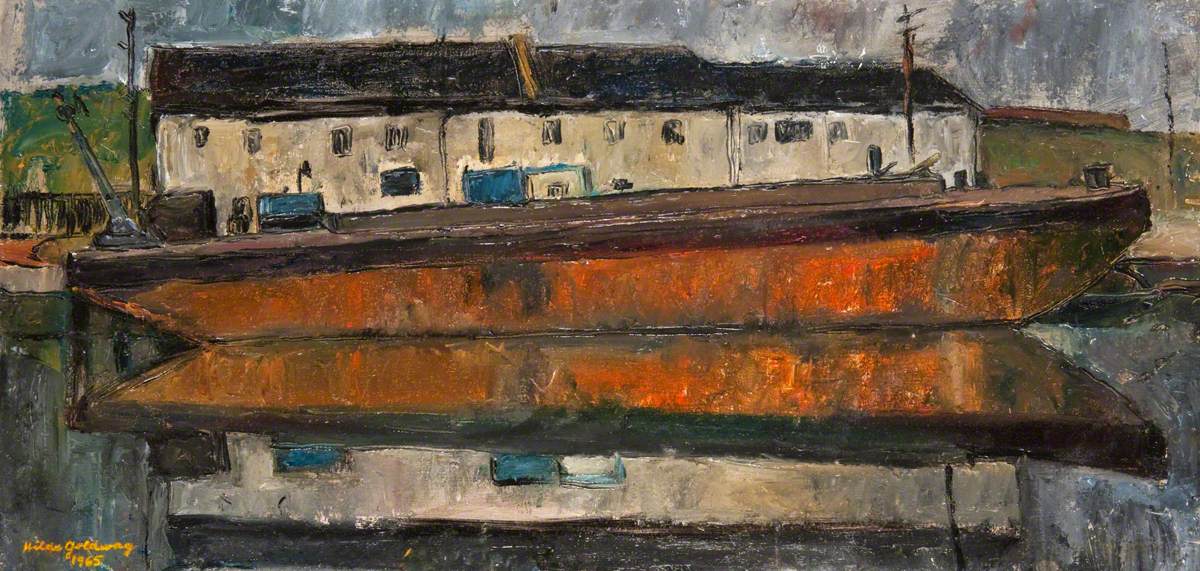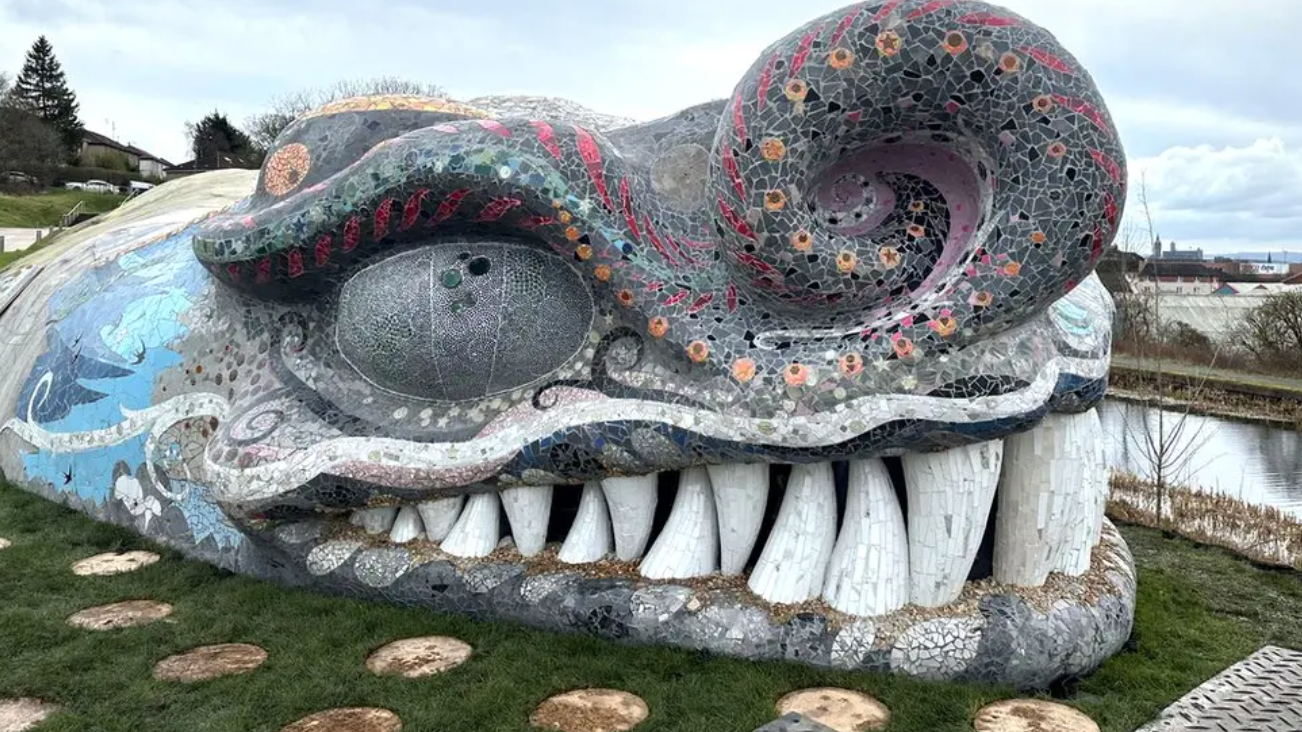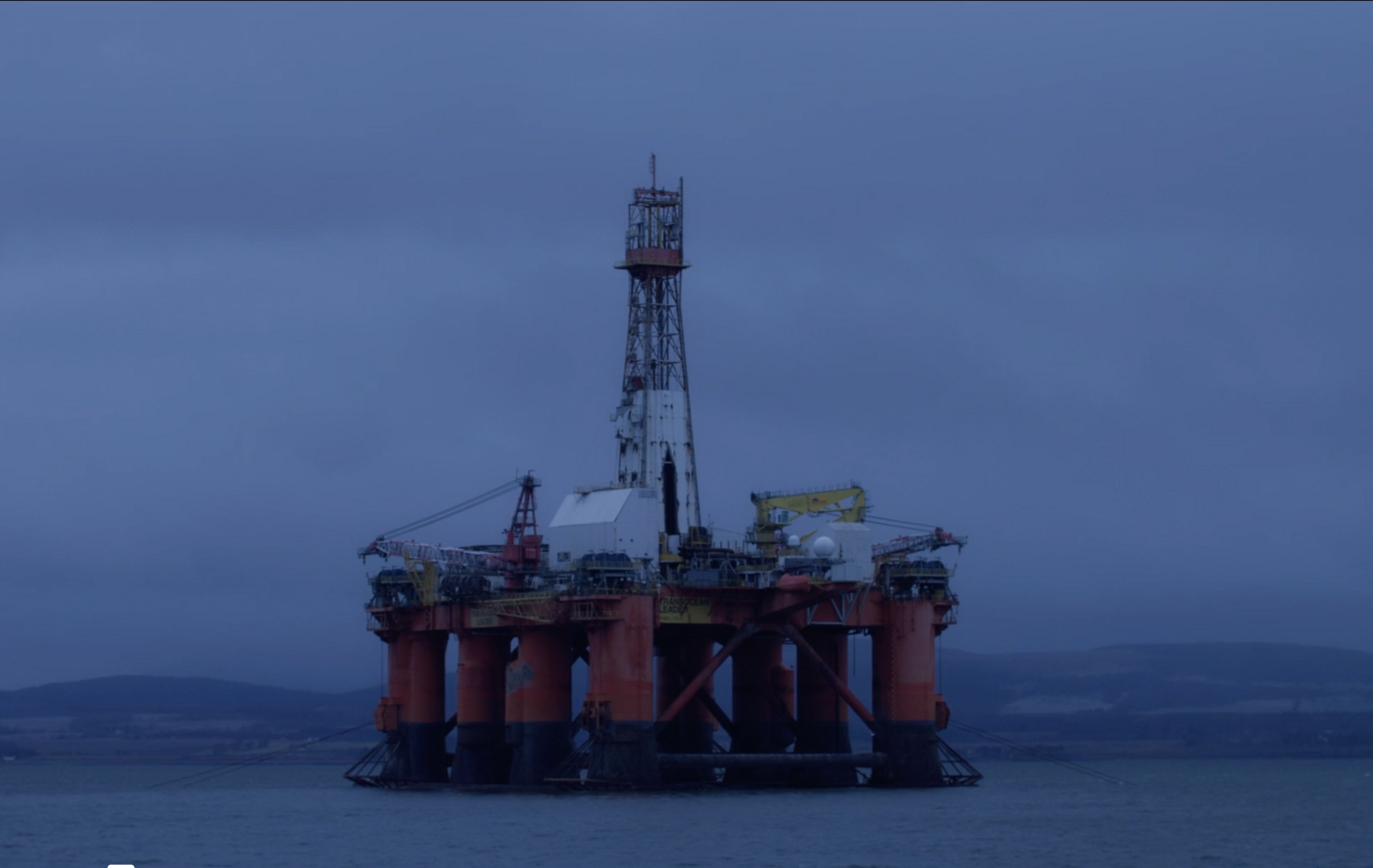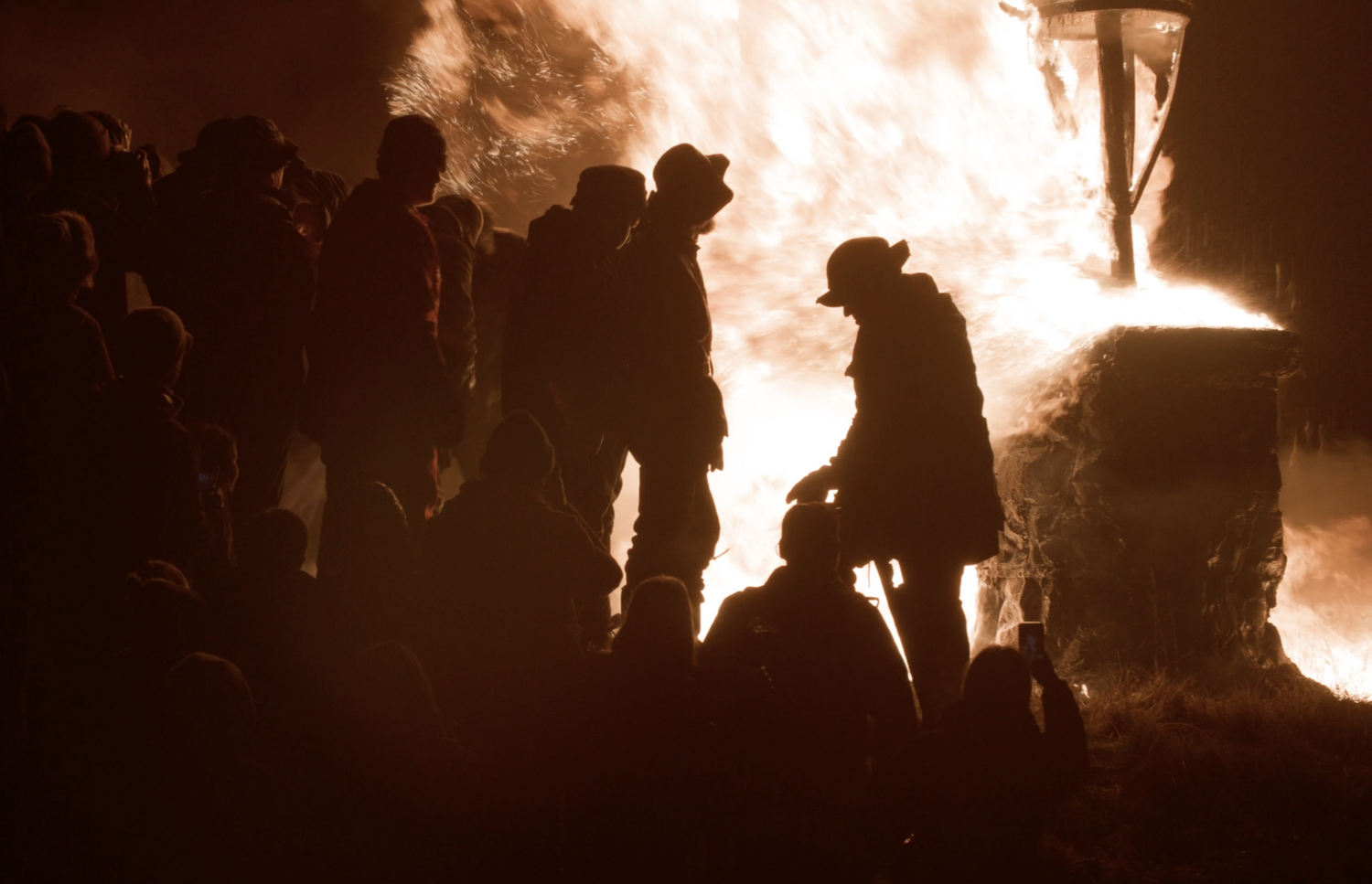WEEK5 SICP: WATER, RIVERS, CANALS AND INDUSTRIAL CULTURE
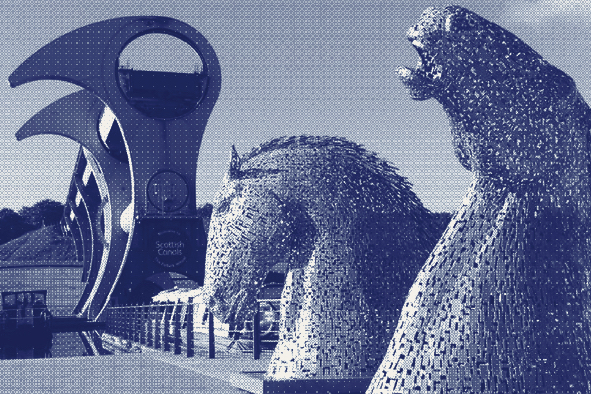
After my first tutorial session, I reconsidered my selection of works for the exhibition. Since there are few artworks that directly depict Kelpies, I followed my tutor’s advice and identified key terms related to the theme. I listed words such as water, metamorphosis, animal, human, and landscape, which helped broaden my search. Expanding on water, I arrived at river, as Kelpie folklore is often linked to riverbanks. Additionally, my chosen exhibition venue, Helix in Falkirk, is intersected by the Clyde Canal, which led me to consider Scotland’s canal and industrial culture.
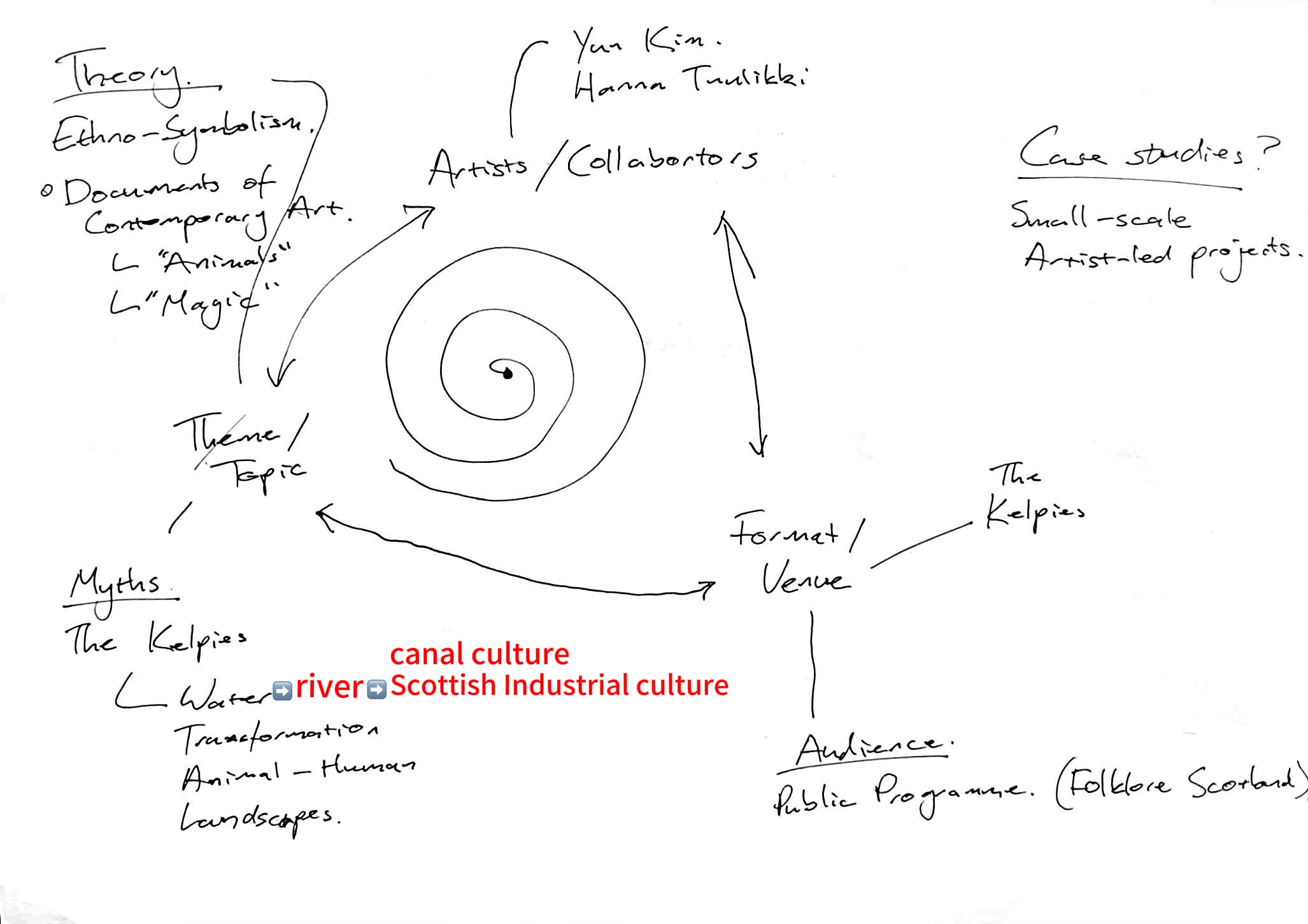
Mind Map of Tutorial 1.
Selected Works
1. Falkirk 10 (2012) – Merlin Currie
Created to commemorate the Falkirk Wheel’s tenth anniversary, this sculpture involved children from seven local authorities along the Millennium Link. Through their exploration of the canal’s history and future, the artwork incorporates iconic shapes from the Falkirk Wheel. It highlights the cultural significance of the waterway, reflecting themes of transformation and connection that resonate with Kelpie myths.
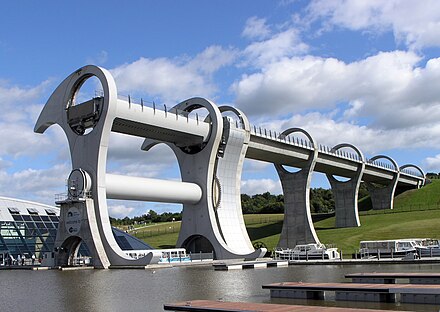
Falkirk Wheel, a rotating boat lift in Tamfourhill, Falkirk, in central Scotland, connecting the Forth and Clyde Canal with the Union Canal.
2. Forth and Clyde Canal & Along the Canal series – Hilda Goldwag
Goldwag’s paintings capture the movement and atmosphere of Scotland’s waterways. Including her work establishes a historical perspective, connecting the modern Falkirk Wheel to the region’s rich canal history.
3. The Beithir, Bella and the Seven Winds – Nichol Wheatley
Commissioned by Scottish Canals, this sculpture is rooted in Scotland’s rich mythological tradition. The Beithir, a mythical beast from the Fuath family and a close relative of the Kelpie, strengthens the exhibition’s connection between folklore and contemporary artistic interpretations of water creatures. Its placement along the canal further highlights the interplay between mythology and place.
4. Rhadinace – Fergus Carmichael
This film explores Scotland’s oil industry through an eco-mythological lens, blending industrial remnants with folklore. While not directly about Kelpies, its folk horror aesthetic and themes of environmental anxiety parallel the evolving interpretation of water myths.
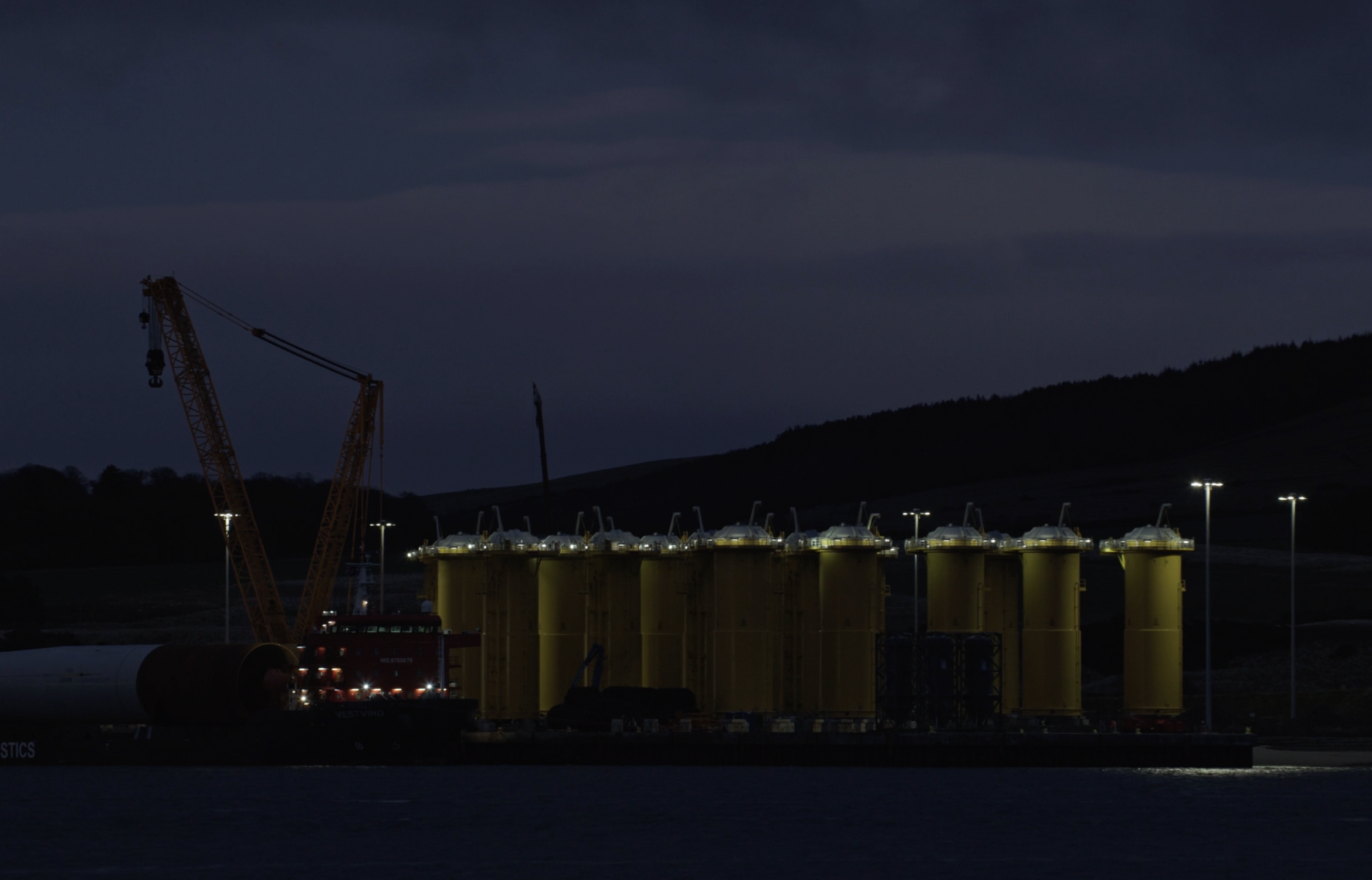
Rhadinace, Fergus Carmichael, 2024.
By weaving together mythology, history, and industry, this exhibition explores how waterways have shaped Scottish identity. Moving forward, I will refine its structure to enhance storytelling and visitor engagement.
References
Art UK. Accessed February 16, 2025. https://artuk.org/.
BBC. Bella the Beithir Unveiled on Forth and Clyde Canal. Accessed February 16, 2025. https://www.bbc.co.uk/news/uk-scotland-glasgow-west-68447601.
Graham, Cameron. Rhadiace. Accessed February 16, 2025. https://camerongrahammusic.com/rhadinace.
McTear’s Auctioneers. Forth and Clyde Canal: An Oil by Hilda Goldwag. Accessed February 16, 2025. https://www.mctears.co.uk/auction/lot/699-forth-and-clyde-canal-an-oil-by-hilda-goldwag/?lot=211876&sd=1.
The Beithir, Bella and the Seven Winds. Accessed February 16, 2025. https://thebeithir.com/.
WEEK5 SICP: WATER, RIVERS, CANALS AND INDUSTRIAL CULTURE / Tianyi Chen / Curating (2024-2025)[SEM2] by is licensed under a
WEEK5 SICP: WATER, RIVERS, CANALS AND INDUSTRIAL CULTURE / Tianyi Chen / Curating (2024-2025)[SEM2] by is licensed under a


